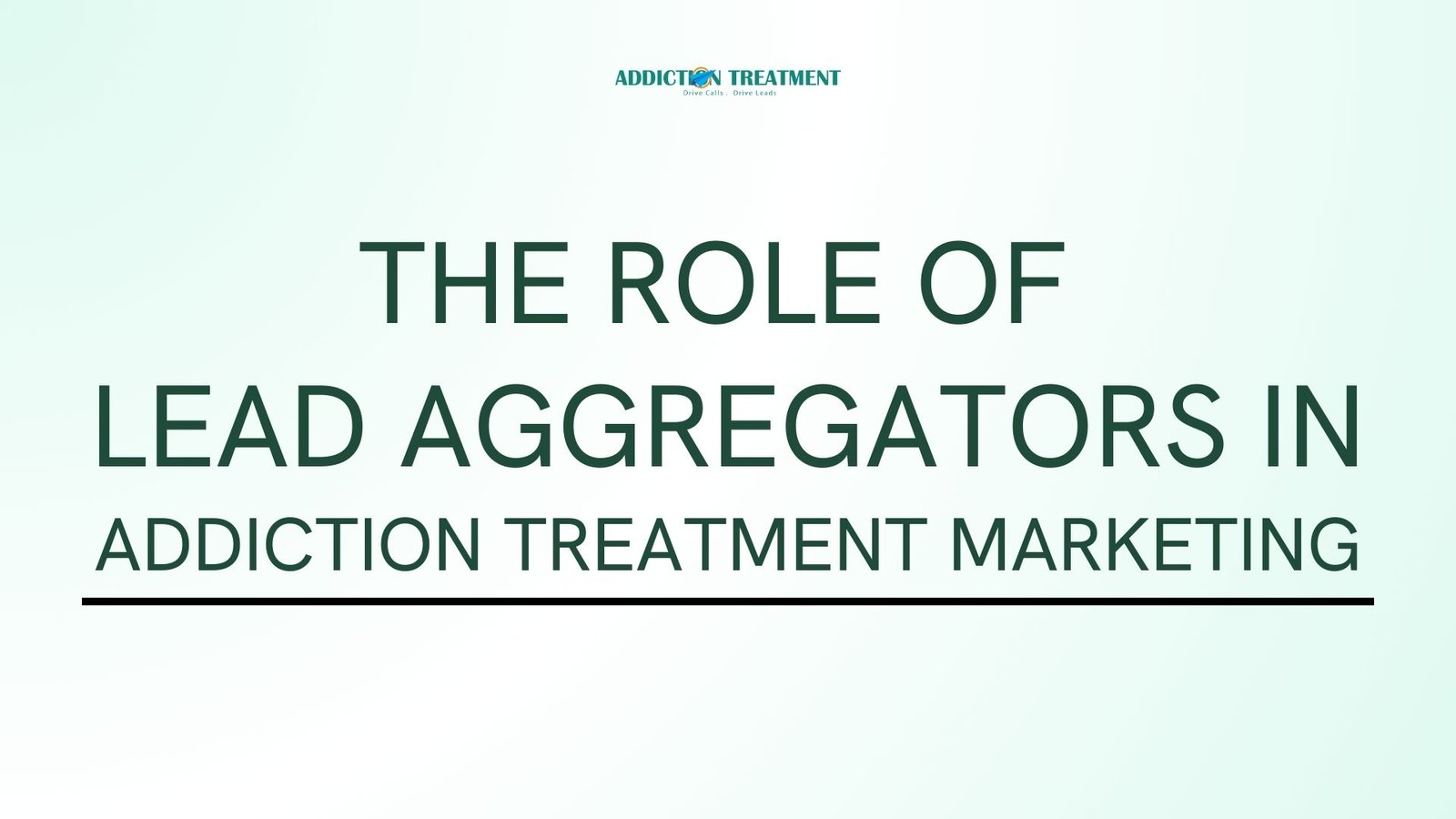In the competitive field of addiction treatment, reaching potential clients requires strategic marketing efforts that connect high-intent individuals with treatment centers quickly and efficiently. One increasingly popular solution is the use of lead aggregators. These specialized platforms act as intermediaries, collecting and distributing leads to addiction treatment centers that match specific criteria.
This article will explore the role of lead aggregators in addiction treatment marketing, their benefits, challenges, and how centers can utilize them to maximize their marketing ROI.
What Are Lead Aggregators?
Lead aggregators are companies or platforms that collect, qualify, and distribute potential customer information to businesses. In the context of addiction treatment, lead aggregators identify individuals actively seeking help for substance abuse or mental health issues and connect them with suitable treatment centers.
These leads can come from a variety of sources, including:
- Online forms on aggregator websites.
- Paid advertising campaigns (Google Ads, Facebook Ads, etc.).
- Organic SEO efforts.
- Call-based inquiries through pay-per-call campaigns.
The leads are typically sold to addiction treatment centers, either on a per-lead basis or through other pricing models like cost-per-call or cost-per-acquisition.
How Lead Aggregators Work
- Lead Generation:
Aggregators generate leads through targeted marketing campaigns designed to attract individuals searching for addiction treatment solutions. These campaigns often use PPC advertising, content marketing, or SEO to capture attention. - Lead Qualification:
After a lead is generated, it is qualified based on predefined criteria, such as geographic location, type of treatment needed (inpatient, outpatient, detox), and payment capabilities (e.g., insurance coverage). - Lead Distribution:
Qualified leads are distributed to addiction treatment centers that have purchased access to these inquiries. Distribution methods may include:- Direct transfer of contact details.
- Live transfers through phone calls.
- Exclusive or shared leads, depending on the pricing model.
The Benefits of Using Lead Aggregators
- Access to High-Intent Leads:
Lead aggregators specialize in capturing high-intent leads—individuals actively seeking addiction treatment. These leads are more likely to convert into admissions, making them valuable for rehab centers. - Time and Resource Savings:
Instead of running complex marketing campaigns internally, addiction treatment centers can rely on aggregators to handle lead generation. This allows centers to focus on their core mission of providing quality care. - Scalability:
Lead aggregators enable treatment centers to scale their marketing efforts without building an in-house marketing team. Centers can adjust the volume of leads they purchase based on their current capacity. - Cost Efficiency:
While lead aggregators charge for their services, the cost is often offset by the increased admissions and optimized marketing spend. Centers only pay for leads, eliminating wasted ad spend on unqualified traffic. - Improved Targeting:
Many aggregators use advanced targeting techniques to ensure leads match the center’s specific criteria, such as treatment type, location, and insurance requirements. This precision improves the likelihood of conversions.
Challenges of Working with Lead Aggregators
- Lead Quality Variability:
Not all aggregators deliver the same level of lead quality. Some may provide leads that are not properly qualified, resulting in wasted resources. - Shared Leads:
In some cases, leads are sold to multiple treatment centers, creating competition and reducing the chances of conversion. Centers must act quickly to engage shared leads. - Compliance Risks:
Addiction treatment marketing is heavily regulated. Centers must ensure that aggregators adhere to compliance standards, such as LegitScript certification and HIPAA guidelines, to avoid legal risks. - Cost Considerations:
While lead aggregators can be cost-effective, paying for a high volume of leads without a solid conversion strategy can lead to budget overruns. - Dependence on External Sources:
Relying too heavily on aggregators can limit a center’s ability to build its own brand and develop long-term organic marketing strategies.
Best Practices for Using Lead Aggregators
- Choose a Reputable Aggregator:
Work with aggregators that have a proven track record in the addiction treatment industry. Look for reviews, testimonials, and case studies to evaluate their credibility. - Define Clear Criteria:
Establish specific criteria for the leads you want to purchase. This includes location, treatment type, insurance coverage, and other factors relevant to your facility’s services. - Monitor Lead Performance:
Track key metrics such as cost-per-admission (CPA), conversion rates, and ROI to ensure the aggregator is delivering value. Regularly evaluate lead quality and adjust your strategy accordingly. - Act Quickly on Leads:
Speed is crucial in addiction treatment marketing. Respond to leads within minutes to maximize your chances of conversion, especially when dealing with shared leads. - Ensure Compliance:
Verify that the aggregator adheres to legal and ethical standards, including LegitScript certification and HIPAA compliance, to protect your facility and potential clients. - Combine with In-House Efforts:
While aggregators can provide a steady stream of leads, supplementing their efforts with in-house marketing strategies (SEO, content marketing, social media) helps build your brand and reduce dependency.
How Lead Aggregators Fit Into a Comprehensive Marketing Strategy
Lead aggregators should not be your sole source of marketing. Instead, they should complement a broader strategy that includes:
- Local SEO: Ensuring your rehab center is visible in local searches for relevant keywords.
- Content Marketing: Building trust through informative blogs, guides, and videos.
- Pay-Per-Click Advertising: Running targeted campaigns to drive direct traffic.
- Referral Partnerships: Collaborating with healthcare providers, social workers, and community organizations to generate leads.
By integrating lead aggregators into a multi-channel approach, rehab centers can achieve sustained growth while minimizing risks.
Conclusion
Lead aggregators play a vital role in addiction treatment marketing by connecting centers with high-intent individuals seeking help. They offer a time-efficient, scalable solution for generating leads and increasing admissions. However, success depends on selecting reputable aggregators, ensuring compliance, and integrating these leads into a broader marketing strategy.
By leveraging the strengths of lead aggregators and combining them with in-house efforts, addiction treatment centers can enhance their outreach, optimize resources, and ultimately help more individuals on their journey to recovery.


Leave a Reply